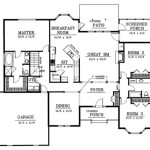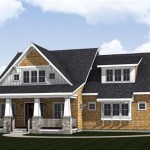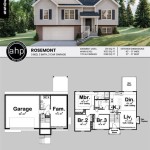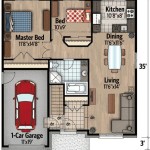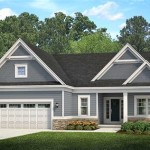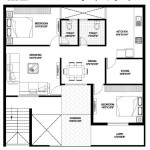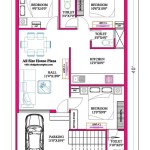House Plans Designed For Seniors
As people get older, their needs and preferences for housing can change. Seniors may find that their current home is no longer suitable for their needs, and they may start to think about downsizing or moving to a more senior-friendly home. If you are a senior who is considering making a move, there are a few things you should keep in mind when looking for a new home. One important factor to consider is the design of the home. A well-designed home can make a big difference in your quality of life, so it is important to choose a home that meets your specific needs.
There are a number of different house plans that are designed specifically for seniors. These plans typically include features that make the home more accessible and easier to navigate. For example, many senior-friendly homes have wider doorways and hallways, lower countertops, and grab bars in the bathroom. Some homes also have features such as ramps or elevators to make it easier to get around. If you have specific mobility concerns, it is important to choose a home that has the features you need.
In addition to accessibility, there are a number of other factors to consider when choosing a house plan for seniors. These factors include the size of the home, the number of bedrooms and bathrooms, and the outdoor space. It is important to choose a home that is the right size for your needs and that has the features you want. You should also consider the location of the home and the amenities that are nearby. If you are looking for a senior-friendly home, there are a number of resources available to help you. You can talk to your doctor or other healthcare provider, or you can contact a local senior center or aging agency. These organizations can provide you with information about senior-friendly homes in your area and can help you find the right home for your needs.
Here are some specific features to look for when choosing a house plan for seniors:
- Universal design: Universal design is a design approach that creates spaces that are accessible and usable by people of all ages and abilities. Homes that are designed with universal design principles will be more comfortable and easier to navigate for seniors.
- Single-story living: Single-story homes are ideal for seniors who have difficulty climbing stairs. If you are considering a multi-story home, make sure that the master bedroom and bathroom are located on the first floor.
- Wide doorways and hallways: Wide doorways and hallways make it easier to get around with a walker or wheelchair.
- Lower countertops: Lower countertops are easier to reach for seniors who have difficulty bending over.
- Grab bars in the bathroom: Grab bars in the bathroom provide support and stability when getting in and out of the shower or bathtub.
- Ramps or elevators: Ramps or elevators can make it easier to get around if you have difficulty climbing stairs.
- Outdoor space: Outdoor space is important for seniors who enjoy spending time outdoors. Look for homes with patios, decks, or gardens.
By following these tips, you can find a house plan that is designed to meet your specific needs and preferences. A well-designed home can make a big difference in your quality of life, so it is important to take the time to find the right home for you.

Small One Story 2 Bedroom Retirement House Plans Houseplans Blog Com

Small One Story 2 Bedroom Retirement House Plans Houseplans Blog Com

New House Plans For Senior Citizens Check More At Http Www Jnnsysy Com Cit 1 Bedroom 2

Small One Story 2 Bedroom Retirement House Plans Houseplans Blog Com

Craftsman Cottage Style Retirement Home Plan

Age In Place Home Designs

Small Single Story House Plan Fireside Cottage

Small House Design Shd 2024007 Pinoy Eplans One Y Bungalow Plans Floor

Empty Nester House Plans Retirement The Designers

Small One Story 2 Bedroom Retirement House Plans Houseplans Blog Com

